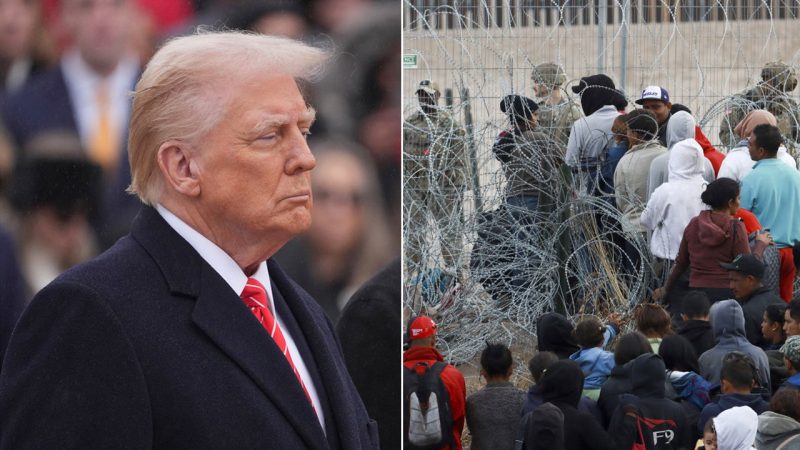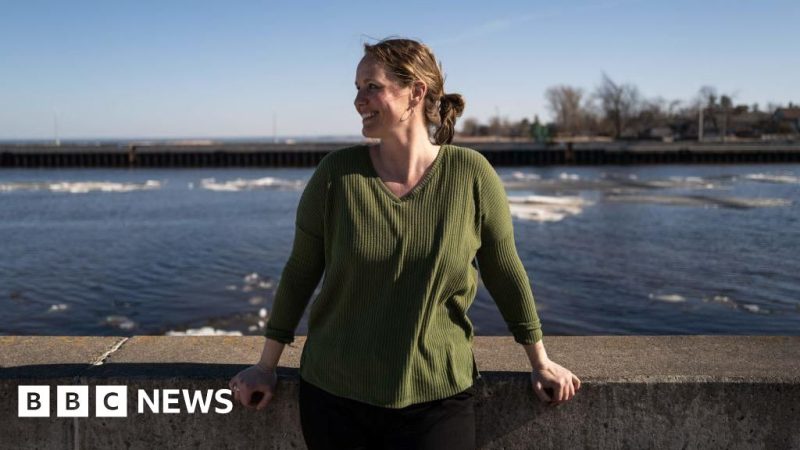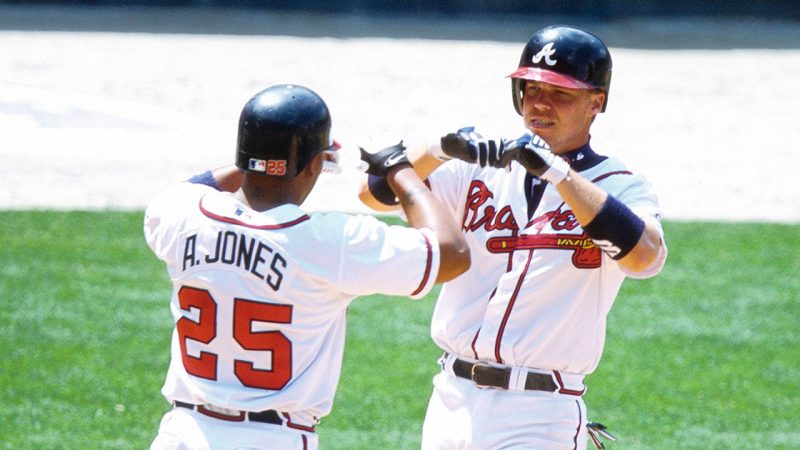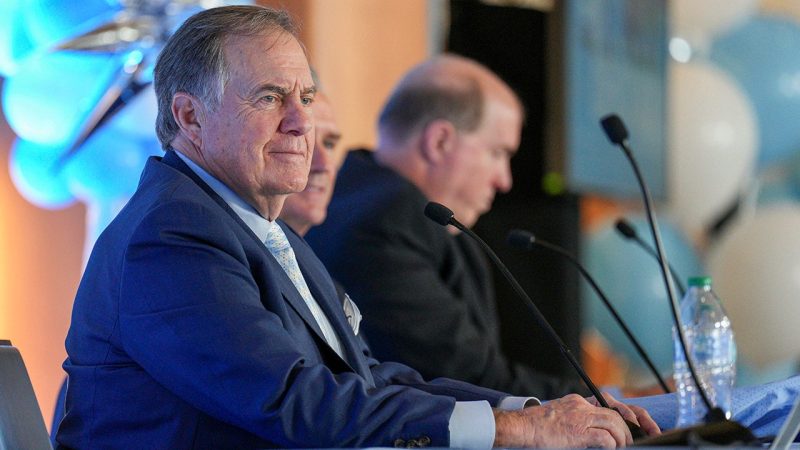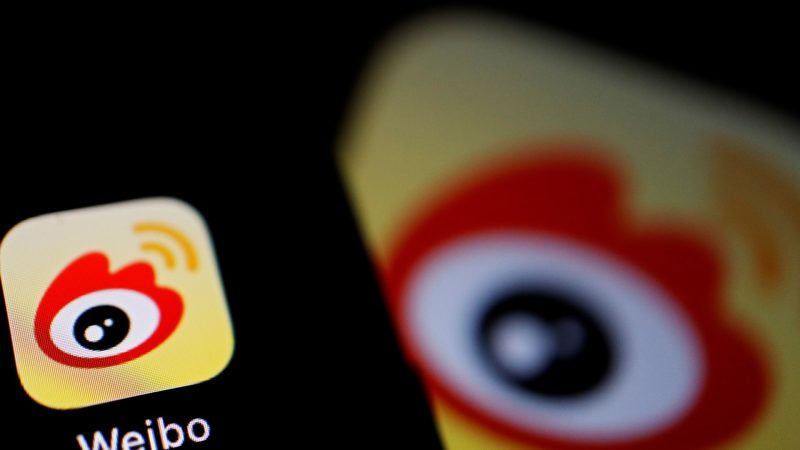How the Ukraine War could come to an end in 2025
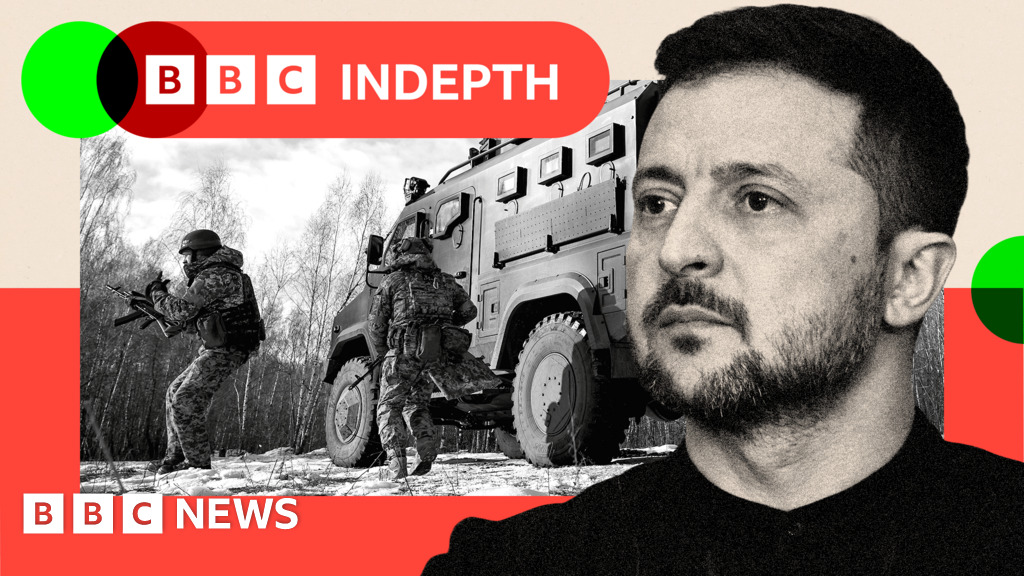
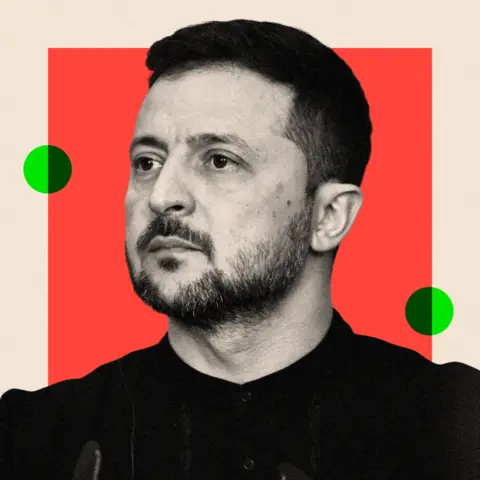 BBC
BBC“I must say that the situation is changing dramatically,” Russia’s president, Vladimir Putin, declared at his end-of-year news conference in December. “There is movement along the entire front line. Every day.”
In eastern Ukraine, Moscow’s war machine is gradually churning mile by mile through the wide open fields of the Donbas, enveloping and overwhelming villages and towns.
Some civilians are fleeing before the war reaches them. Others wait until the shells start exploding all around them before packing what belongings they can carry and boarding trains and buses to safety further west.
Russia is gaining ground more quickly than at any time since it launched its full-scale invasion in February 2022, despite Kyiv’s impressive record of well-publicised asymmetric attacks against its powerful neighbour.
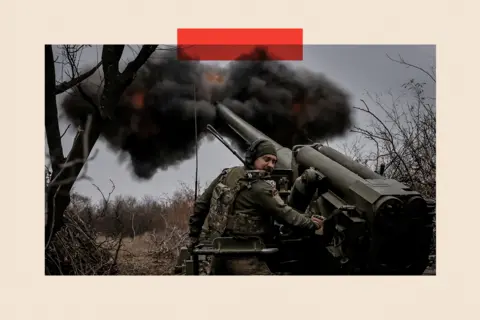 Reuters
ReutersAs the invasion reaches the end of its third year, at an estimated cost of a million people, killed or wounded, Ukraine appears to be losing.
In distant Washington, meanwhile, the unpredictable Donald Trump, not famous for his love of Ukraine or its leader, is about to take over in the White House.
It feels like an inflection point. But could 2025 really be the year when this devastating European conflict finally comes to a close – and if so what could the endgame look like?
‘Talk of negotiations is an illusion’
Trump’s promise to end the conflict within 24 hours of taking office is a typically grandiose boast, but it comes from a man who has clearly lost patience with the war and America’s costly involvement.
“The numbers of dead young soldiers lying on fields all over the place are staggering,” he has said. “It’s crazy what’s taking place.”
But the incoming US administration faces twin challenges, according to Michael Kofman, senior fellow at the Carnegie Endowment for International Peace.
“First, they’re going to inherit a war on a very negative trajectory, without a tremendous amount of time to stabilise the situation,” he said in December. “Second, they’re going to inherit it without a clear theory of success.”
The president-elect offered some clues during recent interviews about how he intends to approach the war.
He told Time Magazine he disagreed “vehemently” with the Biden administration’s decision, in November, to allow Ukraine to fire US-supplied long-range missiles at targets inside Russia.
“We’re just escalating this war and making it worse,” he said.
On 8 December, he was asked by NBC News if Ukraine should prepare for less aid.
“Possibly,” he replied. “Probably, sure.”
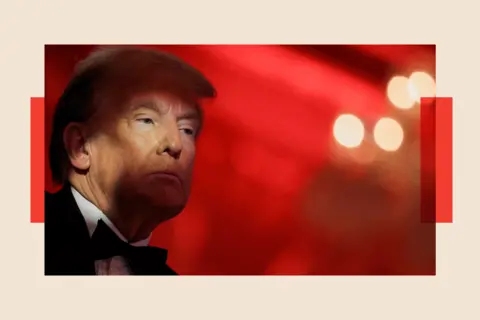 Reuters
ReutersBut to those who fear, as many do, that America’s new leader is inclined to walk away from Ukraine, he offered hints of reassurance. “You can’t reach an agreement if you abandon, in my opinion,” he has said.
The truth is: Trump’s intentions are far from clear.
And for now, Ukrainian officials reject all talk of pressure, or the suggestion that Trump’s arrival necessarily means peace talks are imminent.
“There’s a lot of talk about negotiations, but it’s an illusion,” says Mykhailo Podolyak, advisor to the head of President Zelensky’s office.
“No negotiation process can take place because Russia has not been made to pay a high enough price for this war.”
Zelensky’s ‘smart strategy exercise’
For all Kyiv’s misgivings about negotiating while Russian forces continue their inexorable advance in the east, it’s clear that President Zelensky is anxious to position himself as the sort of man Trump can do business with.
The Ukrainian leader was quick to congratulate Trump on his election victory and wasted little time sending senior officials to meet the president-elect’s team.
With the help of France’s President Emmanuel Macron, Zelensky also secured a meeting with Trump when the two men visited Paris for the reopening of Notre Dame cathedral.
“What we’re seeing now is a very smart strategy exercise by President Zelensky,” his former foreign minister Dmytro Kuleba told the US Council on Foreign Relations in December.
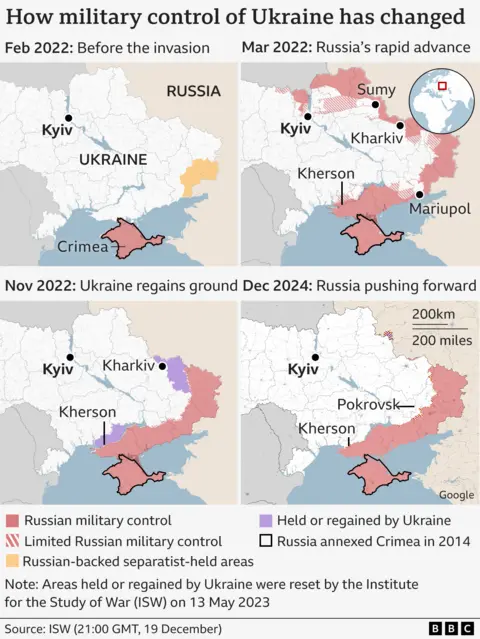
Zelensky, he said, was “signalling constructiveness and readiness to engage with President Trump.”
With little obvious sign that the Kremlin is making similar gestures, the government in Kyiv is clearly trying to get ahead of the game.
“Because Trump hasn’t fully explained how he’s going to go about it, Ukrainians are trying to give him some ideas that he may present as his own,” says Orysia Lutsevych, head of the Ukraine Forum at Chatham House.
“They know how to work with that ego.”
The Victory Plan: possible endgames
Even before the US election, there were signs that Zelensky was looking for ways to bolster Ukraine’s appeal as a future partner for a president-elect like Trump who is both instinctively transactional and reluctant to continue underwriting wider European security.
As part of his “Victory Plan”, unveiled in October, Zelensky suggested that battle-hardened Ukrainian troops could replace US forces in Europe after the war with Russia ends. And he offered the prospect of joint investments to exploit Ukraine’s natural resources, including uranium, graphite and lithium.
Such strategic resources, Zelensky warned, “will either strengthen Russia or Ukraine and the democratic world”.
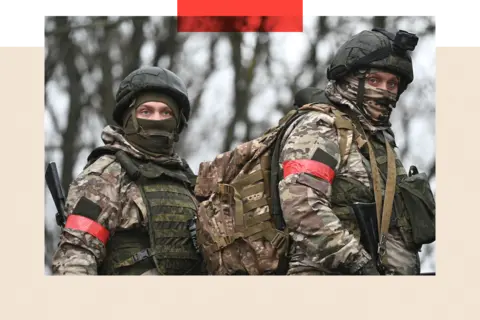 Reuters
ReutersBut other elements of the Ukrainian leader’s Victory Plan – Nato membership and its call for a “comprehensive non-nuclear strategic deterrence package” – seem to have met with a lukewarm response among Kyiv’s allies.
Nato membership in particular remains a sticking point, as it has been since well before Russia’s full-scale invasion.
For Kyiv, it’s the only way to guarantee the country’s future survival, against a rapacious Russian enemy bent on subjugating Ukraine.
But despite declaring last July that Ukraine was on an “irreversible path to full Euro-Atlantic integration, including Nato membership” the alliance is divided, with the US and Germany not yet in favour of issuing an invitation.
President Zelensky has indicated that if an offer of membership was extended to the whole country, within Ukraine’s internationally-recognised borders, he would be willing to accept that it would apply, initially, only to territory under Kyiv’s control.
This, he told Sky News in November, could end the “hot stage” of the war, allowing a diplomatic process to address the question of Ukraine’s final borders.
But, he said, no such offer had yet been made.
Kyiv’s shaky position
If not Nato, then what? With the possibility of Trump-led peace talks looming and Ukraine losing ground on the battlefield, the international debate is all about shoring up Kyiv’s shaky position.
“It’s critical to have strong, legal and practical guarantees,” Andriy Yermak, head of President Zelensky’s office, told Ukraine’s public broadcaster on 12 December.
Ukraine’s recent past, he said, had left a bitter legacy. “Unfortunately, from our experience, all the guarantees we had before did not result in security.”
Without concrete mechanisms akin to the sort of collective defence concept embodied by Article 5 of Nato’s founding treaty, observers fear there will be nothing to prevent another Russian attack.
“Zelensky understands that he cannot just have a naked ceasefire,” Orysia Lutsevych says.
“It has to be a ceasefire plus. It would be suicide for Zelensky just to accept a ceasefire and not to have any answer how Ukraine is protected.”
In European policy forums, experts have been looking at ways in which Europe might help to shoulder this heavy responsibility.
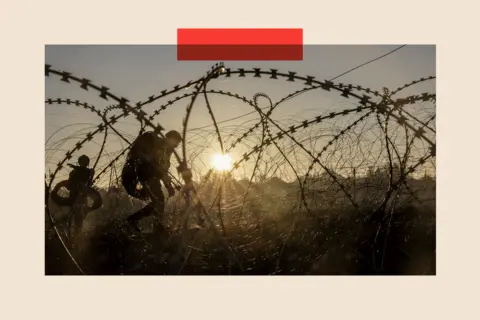 Reuters
ReutersIdeas have included the deployment of peacekeepers in Ukraine (a proposal first floated last February by Macron), or the involvement of the British-led Joint Expeditionary Force, which pulls together forces from eight Nordic and Baltic countries, plus the Netherlands.
But Kofman is sceptical. “Security guarantees that don’t have the United States involved in them as one of the guarantors is like a donut with a giant missing middle in it.”
It’s a view echoed in Kyiv.
“What alternative could there be? There are no alternatives today,” says Mr Podolyak.
Pieces of paper, like the 1994 Budapest Memorandum (about Ukraine’s post-Soviet borders) or 2014-15 Minsk agreements (which sought to end the Donbas War) are worthless, he argues, without the added threat of military deterrence.
“Russia must understand that as soon as they start aggression, they will receive a significant number of strikes in response,” he says.
Britain, Biden and the role of the West
In the absence of agreement on Ukraine’s long term future, its allies are doing what they can to bolster its defences.
In December, Nato’s secretary general, Mark Rutte, said “everything” was being looked at, including the supply of additional air defence systems, in part to protect the country’s battered energy infrastructure from a renewed wave of coordinated Russian missile and drone attacks.
With Ukraine continuing to experience severe shortages of manpower, the UK Defence Secretary John Healey said the government might be willing to send British troops to Ukraine to help with training.
For its part, the departing Biden administration seems determined to deliver as much congressionally approved military assistance as it can to Ukraine before leaving office, although reports suggest it may run out of time to send everything.
On 21 December it was reported that Trump would continue to supply military aid to Ukraine, but would demand that NATO members dramatically increase their defence spending.
Kyiv’s allies have also continued to ratchet up sanctions on Moscow, in the hope that Russia’s war-time economy, which has proved stubbornly resilient, may finally break.
“There’s been deep frustration that sanctions haven’t just shattered the Russian economy beyond repair,” a US congressional source said, on condition of anonymity.
After multiple rounds of sanctions (fifteen from the EU alone), government officials have grown wary of predicting their successful impact.
But recent indicators are increasingly alarming for the Kremlin. With interest rates at 23%, inflation running above 9%, a falling rouble and growth expected to slow dramatically in 2025, the strains on Russia’s economy have rarely seemed more acute.
Putin is putting on a brave face. “The sanctions are having an effect,” he said during his end of year news conference, “but they are not of key importance.”
Along with Russia’s staggering losses on the battlefield – western officials estimate that Moscow is losing an average of 1,500 men, killed and wounded, every day – the cost of this war could yet drive Putin to the negotiating table.
But how much more territory will Ukraine have lost – and how many more people will have been killed – by the time that point is reached?
Top picture credit: Getty Images
BBC InDepth is the new home on the website and app for the best analysis and expertise from our top journalists. Under a distinctive new brand, we’ll bring you fresh perspectives that challenge assumptions, and deep reporting on the biggest issues to help you make sense of a complex world. And we’ll be showcasing thought-provoking content from across BBC Sounds and iPlayer too. We’re starting small but thinking big, and we want to know what you think – you can send us your feedback by clicking on the button below.

